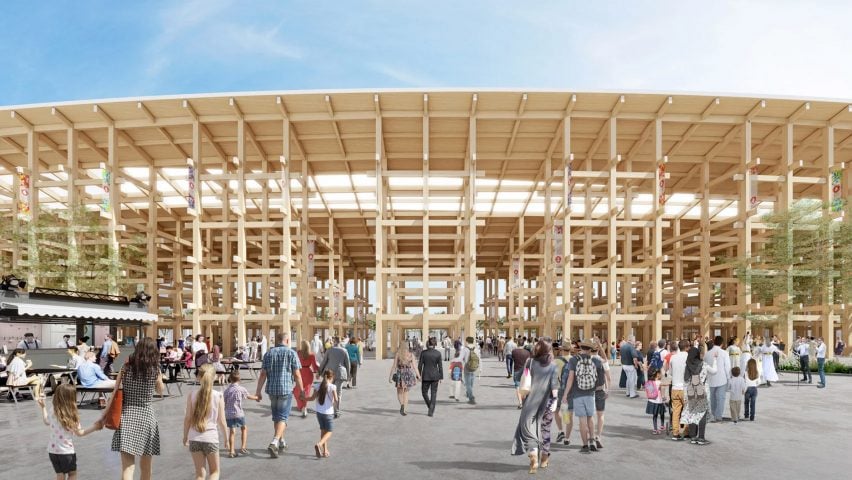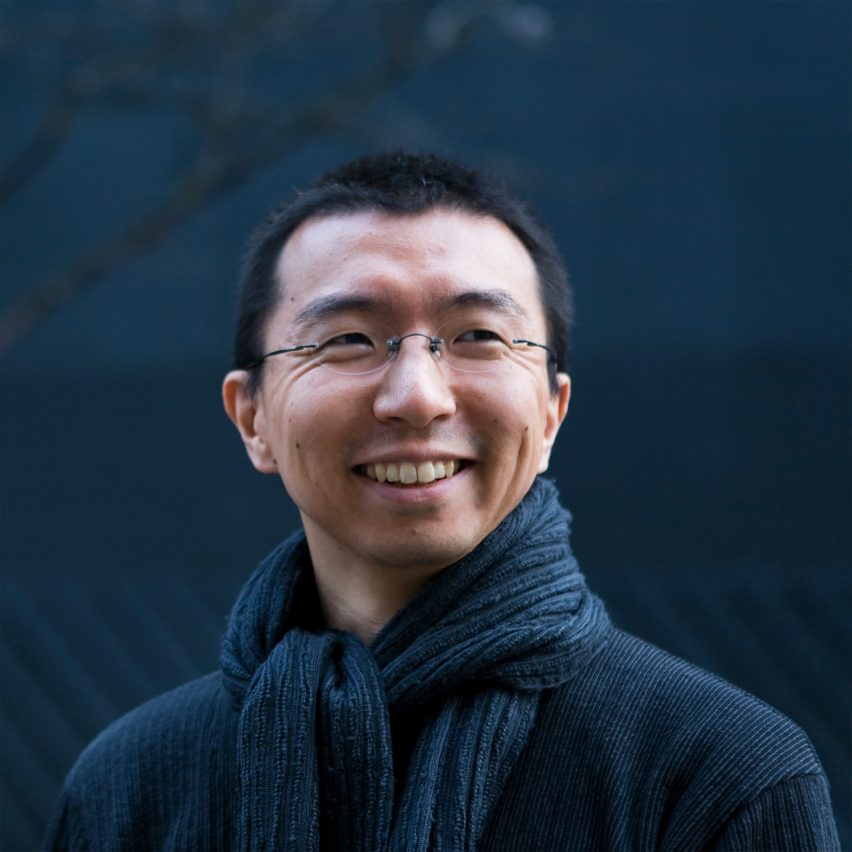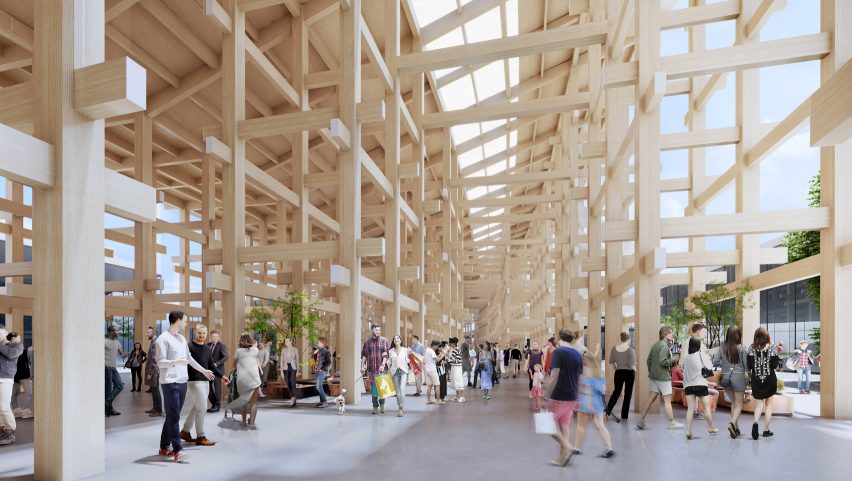
Expo 2025 Osaka is a chance for "wonderful unity" amid global instability says Sou Fujimoto
Expo 2025 Osaka is a valuable opportunity for countries around the world to come together at a time of global instability and conflict, says its masterplanner Sou Fujimoto in this interview.
Despite being "not so interested in Expos" prior to his commission, Japanese architect Fujimoto now believes that they can have a role in being a space of "unity" in the modern world.
"[At the expo] we have a gathering space, gathering of the entire world, in a sense, of so many different people," Fujimoto told Dezeen.
"And if you meet like this, together, then we understand more. A lot of discovery of different cultures and inspirations and talking about our future together," he continued.
"Of course, it could not solve all the problems of the global situation, but I think it is very precious that so many countries can gather together to have a [conversation] and create a wonderful unity."

Speaking to Dezeen at the opening of the visitors centre for champagne house Maison Ruinart in Reims, France, last month, Fujimoto was looking ahead to the Osaka Expo, which will run from 13 April to 13 October next year in Yumeshima, Osaka Bay.
The event will be hosted within the Grand Ring venue designed by Fujimoto, which will encompass 60,000-square-metres and have a diameter of 700-metres and is nearing completion on the site.
A total of 161 countries are set to participate in the event operating under this year's theme of Designing Future Society for Our Lives.
Expos are "very precious" in the context of global crises
Discussing the event, Fujimoto admitted his scepticism prior to being commissioned – explaining that the global connections enabled through modern technology had led to questions regarding the relevance of expos in today's society.
In the midst of global crises, however, Fujimoto emphasised that the value of expos lies in their ability to provide a space for face-to-face gathering of different cultures.

"At that time before the invitation, I was not so interested in Expos – especially in the 21st century," he explained. "We can just get [new things] by networks and smartphones."
"Expos bring all the wonder of each different country and then stay there for six months, which means they stay there together every day they meet and visitors will see different countries and cultures in reality... meeting face to face."
"And this format I thought is very precious, especially in this crisis of the global situation."
The sustainability of expos needs to be "more seriously considered"
Symptomatic of large-scale events such as this one, however, is their carbon-heavy nature – an aspect that Fujimoto says needs to be "more seriously considered" particularly in the context of a global climate crisis.
Expected to welcome approximately 28 million visitors, the expo's travel-related carbon emissions and energy usage over it's lengthy six-month stint all raise sustainability concerns regarding the event.
Additionally, the construction of the event's huge circular Grand Ring venue along with the construction of several purpose-built, temporary pavilions contribute to this concern.
"We need to continue this question about [a] six months event... should we spend such a huge amount of energy for that or not?" Fujimoto said.
The World Expo takes place every 5 years, with previous editions held in Dubai in 2021 after being delayed by a year due to the coronavirus pandemic and Milan in 2015. This will be the second time Osaka is set to host the event, having previously hosted it in 1970.
Among the pavilions set to feature at next year's edition is a boat-informed structure for Qatar's national pavilion designed by Japanese architecture studio Kengo Kuma & Associates and a triple-domed paper, plastic and bamboo structure designed by Japanese architect Shigeru Ban.
Sou Fujimoto is the founder of Tokyo-based studio Sou Fujimoto Architects.
Recent projects by the studio include a visitors centre designed to blend harmoniously into its site at Ruinart's historic champagne house in France. The stone building is defined by a sweeping curve intended to reference "the roundness of a champagne bubble".
Elsewhere, the studio has designed a circular holiday home topped with a bowl-shaped meadow roof and a rural university building topped with a walkable rooftop.
The visuals are courtesy of Sou Fujimoto Architects.